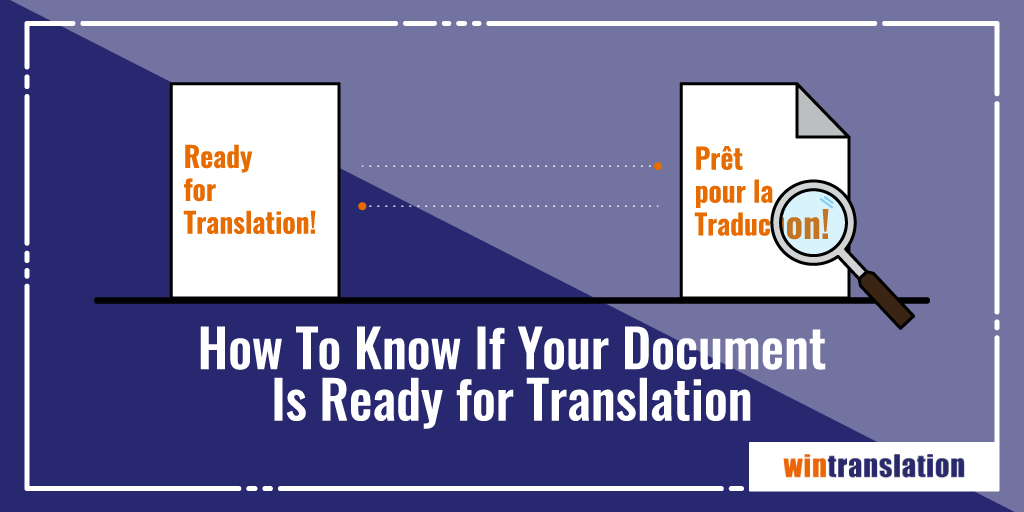How To Know If Your Document Is Ready for Translation

So you’ve decided to translate your content? Congratulations!
But is your project really ready to be translated?
Time to find out!
No, we don’t mean is it attached to your email (but you should double check just to be safe). Preparing your project for translation can save you time, money, and many headaches down the road.
Here are some things to consider before you hit the send button:
Does it say what you want it to say?
It may seem obvious, but it’s always important to make sure your document is getting your message across clearly and efficiently. It’s a good idea to go through your text and eliminate redundancies to reduce word count and, in turn, the cost of your translation. Each word can add up to make a big difference in the long run, especially in cases where documents will be translated into multiple languages.
QUICK TIP: Make a checklist of all of the essential points that should be included in your document. Every time you come across one of those points, check it off your list. This will give you a good idea of what points you have overstated or omitted.
Is it consistent?
Translators often spot inconsistencies that require them to contact the client for clarification. Things like names, units of measure, quantities, and examples can often be overlooked, especially when producing lengthy documents, and these small, tedious details can take time to clarify.
Take the time to sit down and patiently go over the content with a fine-tooth comb to catch these tiny intruders before they make their way into your final product.
Is it in an editable format?
Many file formats, such as PDF, cannot be opened and edited in word processing programs. Remember to create or send your documents in an editable format (like .doc) to avoid difficulties with incompatibility.
Has it been spellchecked?
Remember, typos aren’t just the words with red squiggly lines under them. When checking for typos, you should look for any misspelled or misplaced words. Because at the end of the day, one letter could spell the difference between “an exotic destination” and “an erotic destination”.
Is it the final version?
It might seem like common sense, but make sure the version you send for translation is the final version of your document. Projects go through multiple rounds of correction and revision and pass through many hands before being finalized. Sending multiple versions of the same document can be a headache for translators to keep track of and could result in extra charges and timeline extensions. Make sure the translator receives your absolute final, publication-ready document to ensure your finished product is of the highest possible quality.
You made it to the (first) finish line! You’ve gone through your document, edited, spellchecked and proofread every line. Nicely done. Your project can be stamped Translation Ready.
All that’s left now is to just sit back, relax and leave the actual translating to capable hands.
Ready, Set, GO!


This Post Has 0 Comments